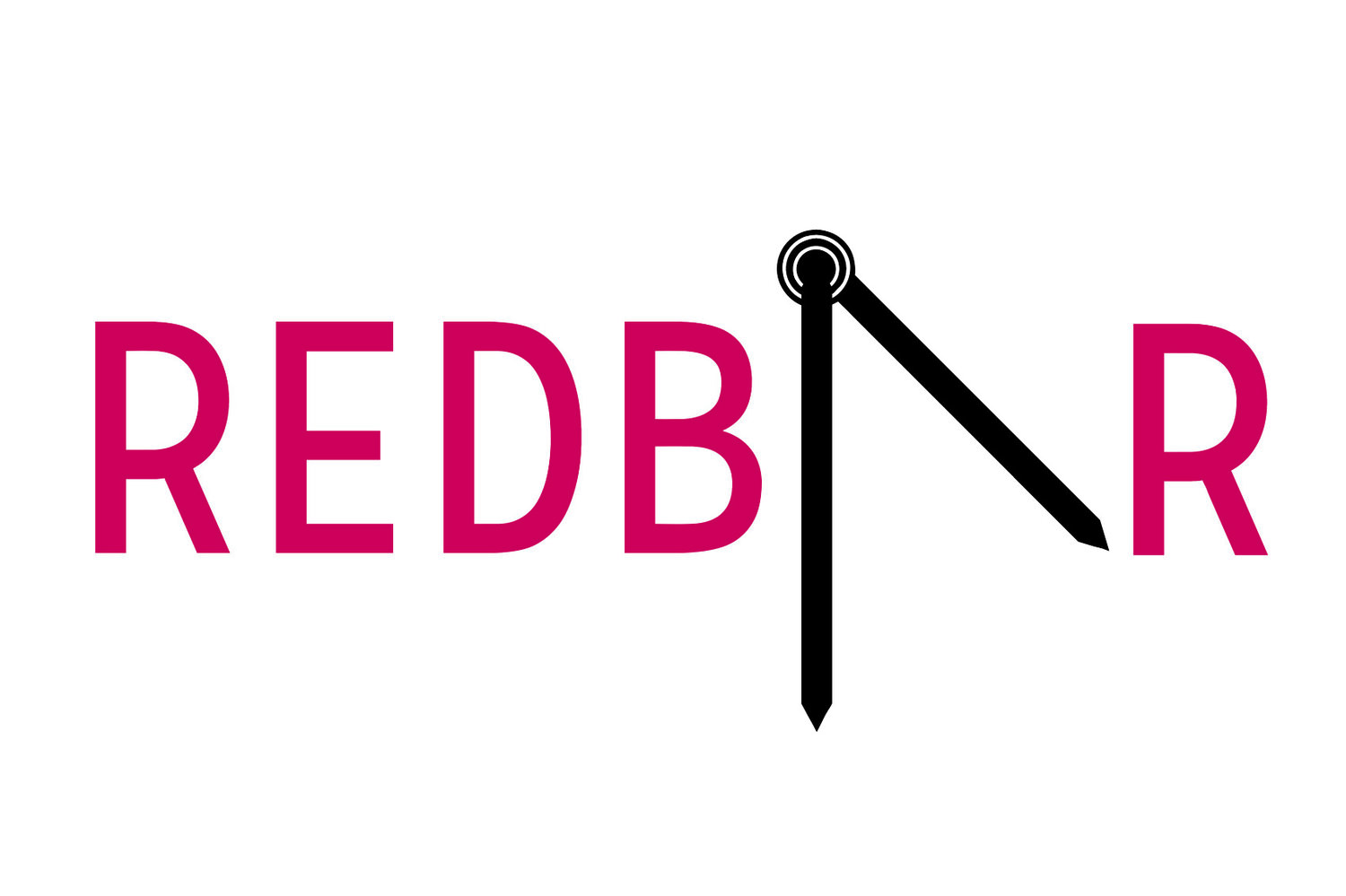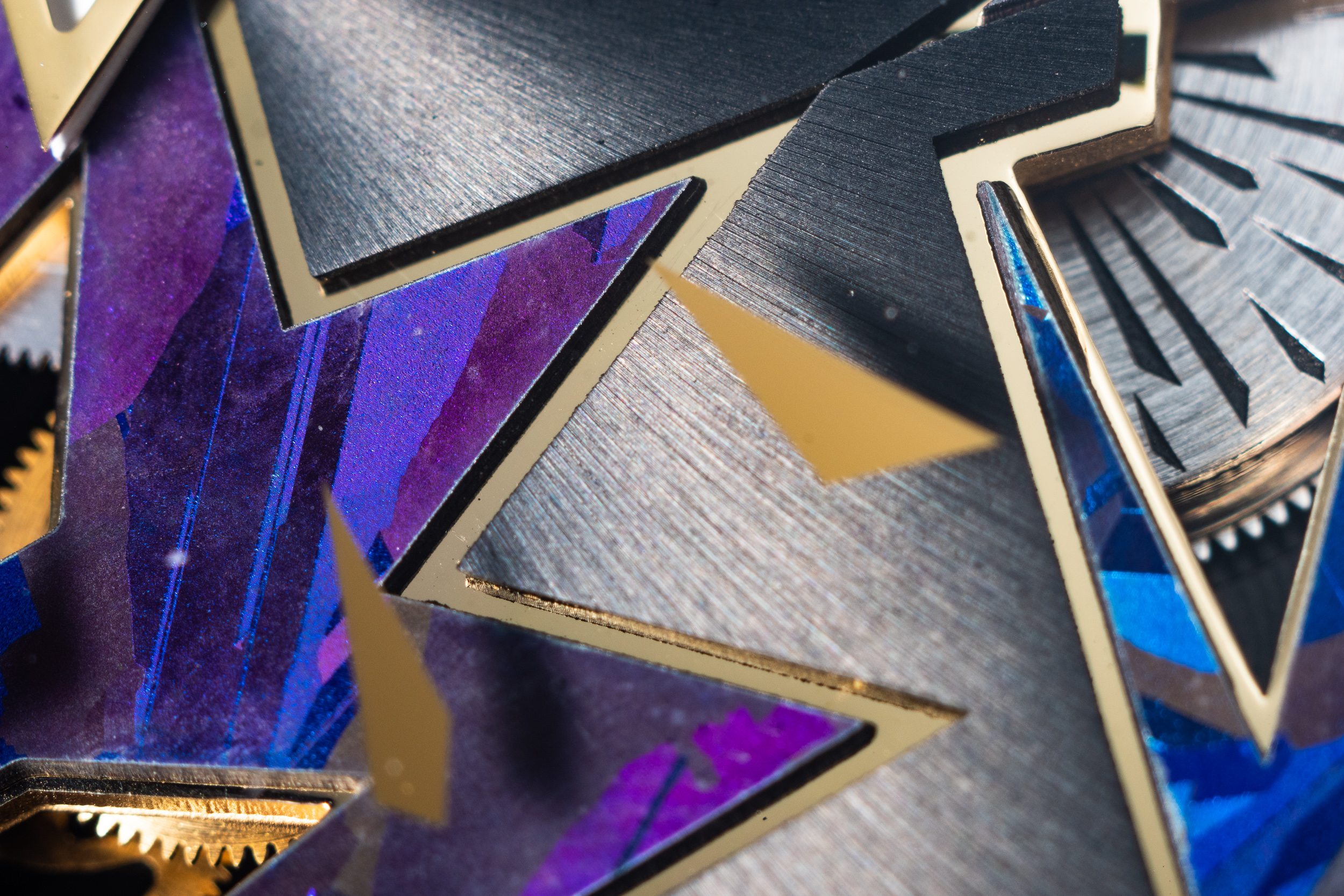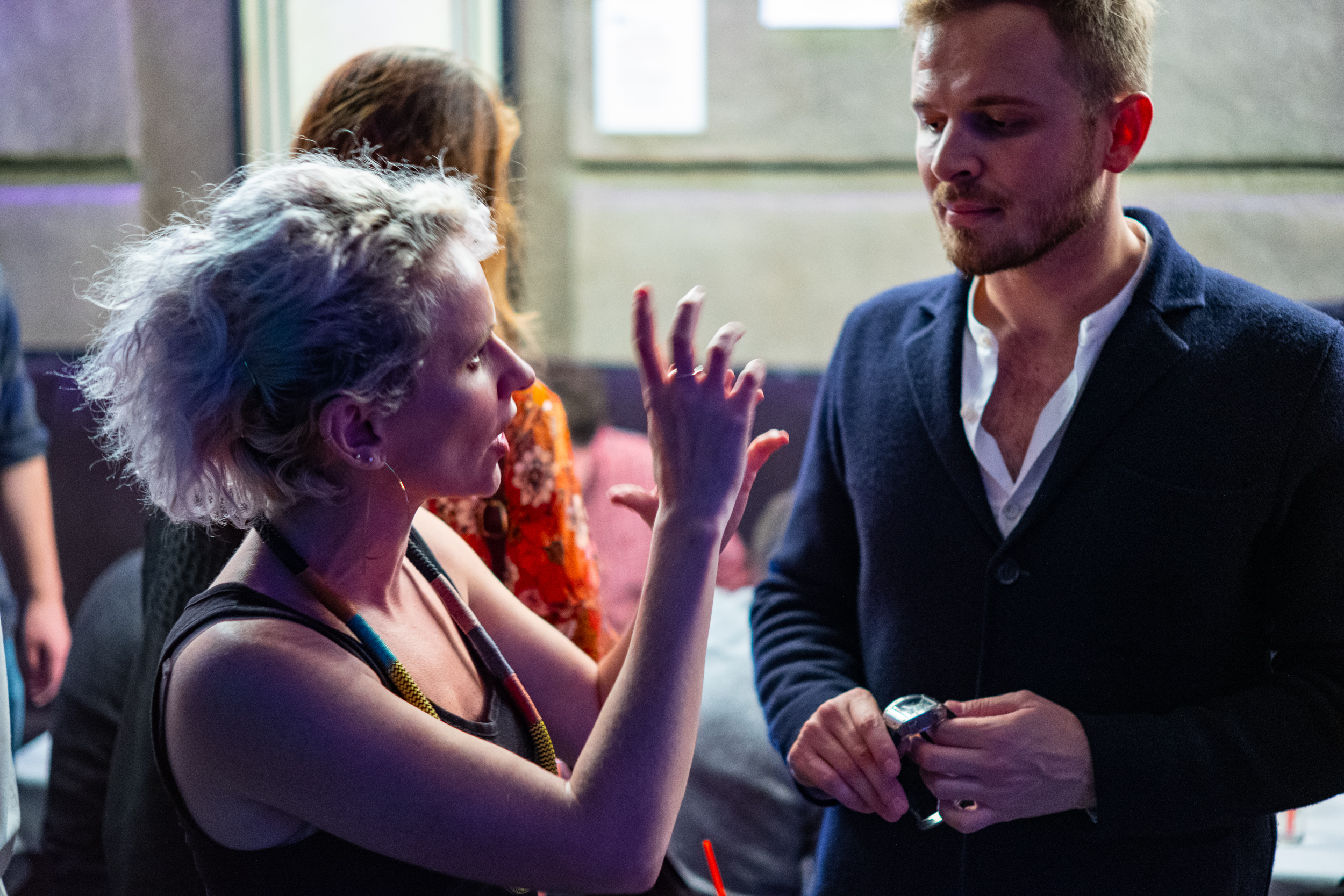Interview with Fiona Kruger
Fiona Krüger with some of her designs
I had the privilege of sitting down with the talented Fiona Kruger to ask her a few questions. For those of you who’ve been living under a rock and may be unfamiliar with her work, Fiona Kruger is the designer responsible for the Skull and Chaos Collections. You can find out more about her pieces here: www.fionakrugertimepieces.com
On behalf of all of us here at RedBar I’d just like to say thank you for joining us today! Let’s dig right in. It’s clear there’s a strong connection between the watch movements you choose and your aesthetic. Is that something we’ll see more of in the future?
I think there’s two aspects to that which are quite important… I knew zero about watches until I went to Switzerland to do my studies... [These mechanisms] would get put inside of a watch with a dial on top and you wouldn't see any of it. And I was like, “But that's the cool part!” ...So for example in the skull one, the Petit Skull, I knew I wanted to do something smaller size. So I needed to do a smaller movement… At 12, the mainspring and the balance wheel looked like two eyeballs, and that was brilliant. Because I always try to bring the mechanical aesthetic into the piece. It's the same with these. There is a real match between the mechanical bit and the dressing up of the watch, and I designed it in a way where one without the other doesn't make sense...
The second point is that all the people in Switzerland who make the stuff... I love going in and speaking with them because it is how I get ideas for new things, and I learn stuff doing that. So… I will adapt the design to highlight what they do.... I think it ends up looking cooler. They are more into it because they feel like you have taken then into consideration, so you end up with a better looking product… It's a much more interesting design process for me. I like to highlight the really good independent suppliers in the industry because if they are not supported they'll just disappear, and that basically means there won't be any innovation… It's like being a freelancer vs being in a company… Supporting the independent suppliers is really crucial because that is where all the innovation come in.
You enjoy working with people who are willing to push boundaries. What are some of the boundaries you feel should be pushed in this industry?
We are making something you don’t need. We don’t need these anymore. But the reason why we are making them, especially at the luxury end, is because you want somebody to look at it and think “Oh my God, I have to have that!”... It’s okay to be more experimental… The historical pieces in the Patek Philippe museum are the ones that made me fall in love with watchmaking, and they’re like guitars and animals and angels. People think the skull pieces that we did are really avant garde... If we went back 400 years, this would be normal. They were really mental!
So I think bringing back that creativity and artistry into watchmaking is really important. Those pieces are 100% creativity first. … And I would say, be less afraid to take risks with everything from the supplier side to the marketing side to the selling to everything. Don't just say no. Be curious and ask questions... You learn something from that rather than everything being super safe.
Fiona Krüger Chaos Collection Entropy I: Purple Pow
What would you want someone to first feel when they look at this piece?
When you see all the bits move… It’s like when you're a kid and you get a new toy. That feeling… It's nice when people read into the story and discover something new. But if they see it and are like, “That’s great and matches my outfit,” that’s fine too. It doesn’t have to be some great intellectual exercise every time. I think that’s what's quite nice. People see them and have an immediate relationship with the watch. It's not so much about the product but about the collection. The whole memento mori is a concept universally understood, and the skull is a symbol everyone will recognize… The themes that I use are universal… People who aren't necessarily super into watches buy our pieces because they see it and fall in love with it like an amazing piece of artwork or sneakers.
What is an unusual habit or absurd thing that you love?
(Laughter) Swearing, but I think that’s a really Scottish thing. When I was younger, my best friends mum used to call me the sailor and say, “You're so little and so cute” - (and I was a real geek and got all A and everything) - “and then out your mouth!” So, that’s probably a bad habit.
I think the other thing is the sketchbook. It’s like a safety blanket... I do it as part of my process and you could do everything on the computer but that's not where the ideas come from.
[An animal I love is] architeuthis. Fucking amazing! ...No one has ever seen them in the wild, in their own environment doing their natural thing. They’re huge, like 17 meters long. Can you imagine something 17 meters long? And they are unbelievably intelligent.
Fiona Krüger wearing the Entropy I from the Chaos Collection
When you were first delving into horology, what was the worst advice you were given?
I was told at the beginning, for the skull piece, “Why don’t you just make the case round and have the skull inside? Because from a production point of view, that's a lot easier.” And I said, “Probably because that's not the point, but thanks for the really super practical advice…” It’s about doing what's right, not what’s easy.
What would you say are some common misconceptions about your watches, your process, or you?
People think I am German because I am an umlaut on the U of my last name, which is [my husband’s] fault because that's my married name. People try to speak to me in German and I am like, “Oh! Nein.”
With [misconceptions about] the skull pieces, that it’s a trend... The basis of this comes from horological history because it’s a theme that was really important to watchmaking history. The skull shape was used to make pocket watches... The shape in horological history means something. The fact that people thought it was a trend rather than something with any substance is probably the biggest misconception.
This was such a strong starting design that people couldn't imagine I was able to do anything besides this. But I’ve designed stuff for other brands. I love doing that sort of work because you learn stuff. And in those jobs, you think, “Okay, this is the best of that brand... How can I highlight that in the design?”
Detail from the Entropy I dial
When you think of the word “successful,” who comes to mind?
Maya Angelou, but that’s got nothing to do with watches. I’d say her because I remember listening to a couple interviews about things that she did and… you know people who just have stuff in perspective and are just 100% as ease with who they are? That for me is the thing. You're not trying to be anything. You just are and you’re happy with that. That to me is the ultimate thing that means “successful.” So I would say Maya Angelou.
What was behind your choice for the crown placement?
I wanted it to be sort of ignorable because it's all about what’s inside. The job of the case was just to be the frame around the artwork and the crown when it's at 12. Because it’s symmetrical, you don’t pay as much attention to it. Whereas when it’s on the side, it's like this a bit off center thing that I notice more.
Tell me about locations that have inspired you.
Mexico for the skull ones. I grew up in France until I was ten in a tiny little village of like seven hundred people in the middle of the vineyards. And then we moved to Mexico City and I was like “Oh my God, I’m going to die.” Going to all the markets and seeing all of the Day of the Dead stuff… You had these skulls that were brightly colored and having a good time, and it’s just not what I was used to seeing. So that had a big impact on me. And the fact that to them, death is not the end (it's part of a bigger story) and that they use that event to celebrate a person's life. That has an impact on the design of these… they don't look kind of gothic, they look happy. Besides that we lived in Brazil for three years... Colors and textures [I like come from] Brazil.
Fiona chatting with Rexhep Rexhepi of Akrivia at RedBar’s Independents Night in October 2018
Since starting your work, what would you say is a belief or behavior that you've obtained that changed your life?
It's not so much a behavior as a practice, but being able to look at your own work as though you're looking at someone else's. Because when you're designing something you're really in it and it's hard to see… It was something I had to learn to do when I was teaching at the university where I did my masters. After I graduated, I was a teaching assistant. I think that was invaluable because it's not like I have a design team. I think of the thing and design the thing… you need to have an objective point of view.
[Also,] taking a moment in the morning and in the evening to not be on my phone. Nothing. I know social media is massive and when you’re a small company it’s an amazing tool because you can reach a lot of people. And there’s that sort of compulsion to be proactive, especially when you've got your own business. To always be on. When I first started, I felt like I had to be on all the time. It needs me, like my baby or something… No. The first hour of the day is mine. When I wake up in the morning, I don't look at my phone the first hour [or during] the last hour in the evening before I go to bed. I will watch stuff on my iPad, but no social stuff. Just to totally switch off.
Often failures end up leading to success. What would you say is your favorite failure?
Actually, this. This started out as a project for another company. The masters I did was sponsored by and is sponsored by luxury brands, so we did stuff for Hermes, Vacheron Constantin. And when I was there, Audemars Piguet was one of our sponsors and they asked our class to design a watch for them. I didn't even know who they were, that’s how little I knew about watches... Then my art brain kicked in when I saw the historical pieces and realized it doesn't have to be round and flat... I can literally design what I want. I didn't think that I was doing something for a brand, it was just “What do I want to do?”
So as a pitch for AP, this is a massive failure. But it ended up being the thing that then started my business. I remember the guy who was the head of the course [asked], “Are you actually going to pitch this to them?” And I was like, “Yeah, obviously. It's cool.” Then they came in and were looking at it... “That is cool but its not very AP.” [I decided], “Yeah, it's for my portfolio.”
Two versions of the Entropy watch from Fiona Krüger’s Chaos Collections
What would you say to people who are just starting to find their own interest in watches?
I would say that you should investigate and buy what you like, and don't worry about what you think you should [like and enjoy]. Literally your own taste is the bar of what is good. And with the internet you can do a lot of research and have fun discovering your own taste. Then for someone wanting to start up your own brand, I would say yeah, just do it. Because if someone had given me a list of the potential pitfalls I would have gone, “Nah, I'll go do something else.” But being thrown into the deep end of a swimming pool, you either swim or sink. So you just swim and at some point you're at the other end. There's a lot to be said for being hard working, passionate, and blissfully ignorant. A trifecta.
Is there anything else you'd like to say to RedBar readers?
Just that I'm really glad RedBar exists. I think watches are amazing objects. You have fine art, design. [Combined:] you've got watchmaking. I see them all on the same level as part of culture and I think they’re for everybody. I'm really glad RedBar exists to… get rid of the exclusivity [attitudes] that can come around with watches... Go to all your meetups and bring all your weird watches, even stuff that was a dollar but you thought the shape was cool.
Fiona pointing out details of one of her watches to Christopher Daaboul of Esperluxe
All photos: Atom Moore











